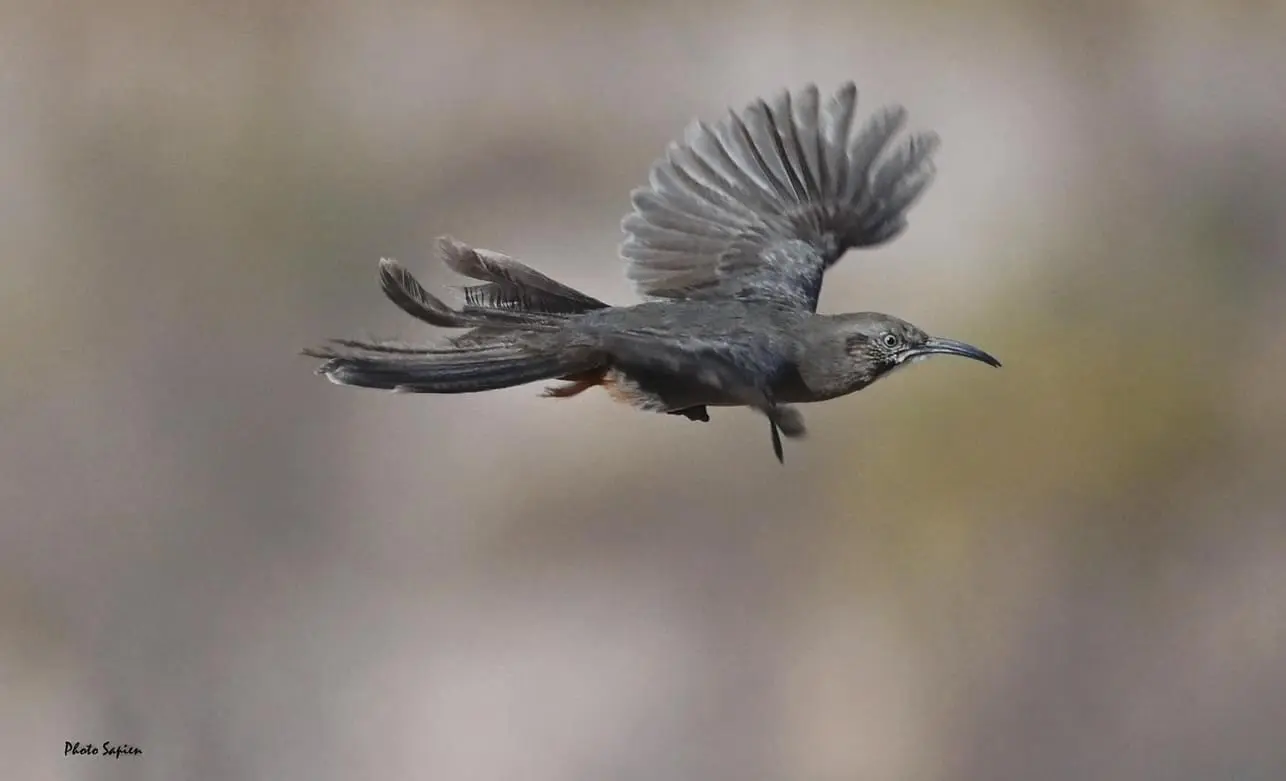The Crissal Thrasher

What Wetlands Park Bird’s “Personal Problems” Can Make Bird Counts Difficult?
Look over there! Did you see that bird running between bushes? It’s too small to be a roadrunner, and boy, is it fast! Don’t be too surprised if you miss a Crissal Thrasher (Toxostoma crissale) – they are hard to see even in the few open spaces in their densely vegetated habitat.
At least one biologist has called Crissals “reclusive and agoraphobic”. They seldom perch in the open, rarely fly, and run quickly from bush to bush on the ground preferring to stay safely hidden in Clark County Wetlands Park’s dense riparian thickets, tamarisk stands, and mesquite groves.
Crissals are one of those birds you seldom see in the Park, or anywhere else. In fact, you’re more likely to hear a male’s call early in breeding season or a bird’s rolling call notes at dawn and dusk than you are to see one!
Crissal thrashers are considered one of the largest of the thrasher species. These birds are generally buff-colored and grow to 13 inches and have deeply curved bills and very dull yellow eyes. The bird’s name is derived from the characteristically bright rust-colored patch located in the area between the tail and vent known as the crissum.
The birds are considered permanent residents throughout their range in the arid southwest (western Texas, southern New Mexico, southern Arizona, southeastern California, extreme southern Nevada, and extreme southwestern Utah) to central Mexico. They may wander out of their preferred breeding habitat in winter. Crissals rarely fly—especially in the open—preferring to walk or run in their territory. The birds will run for cover when disturbed by a potential predator, including birds of prey and owls. The birds avoid creosote bushes.
Crissals are early breeders, with their first clutches laid in February or March (in the lower deserts, including the Park) and by early April at higher elevations. The birds’ breeding season may continue through June or July, and second broods are common. Nests are typically placed in the interior of dense shrubs such as the mesquite, or in other shrubs such as willows and tamarisks. Nests are well concealed about two to eight feet above the ground. Both parents build their nest, which is a bulky open cup of thorny twigs lined with softer materials including grass, weeds, bark fibers, and sometimes feathers.
Crissal pairs have been shown to successfully reject eggs laid by Brown-headed Cowbirds, who generally depend on other birds to hatch their eggs. Both parents feed nestlings. Pairs may remain together on territory at all seasons. Males sing in spring to defend nesting territory. Young leave nest about 11-13 days after hatching but are unable to fly well for several more days.
Crissals feed mostly on insects, such as beetles, grasshoppers, ants, caterpillars, along with spiders, centipedes, and other arthropods. Sometimes they eat small lizards and some small berries and fruits. When foraging, they walk or run along the ground with their tails raised and probe the soil and leaf litter for insects and seeds with their long, curved bills.
Good luck in spying a crissal—or even hearing one when on the trails in the Park. Their populations are believed to be dwindling in the Las Vegas Valley due to urban sprawl. That’s even more reason why we must preserve our very special and unique 2,900-acre Park.
-Narrative by Constance Carlson; photo by Thane Webb
Please enjoy these YouTube videos:
Crissal Thrasher (Toxostoma crissale)
Crissal Thrasher Song Video: Bird Songs Western North America- Thrasher Bird Call Nature
The vanishing birds of Southern Nevada
Crissal Thrasher Song! Crissal Thrasher Call!
